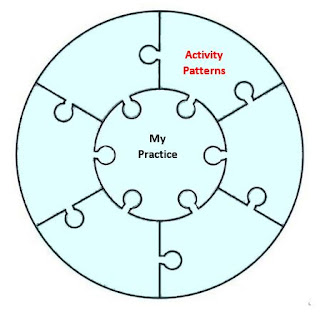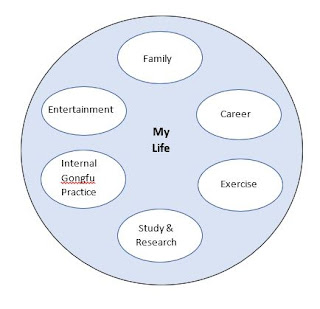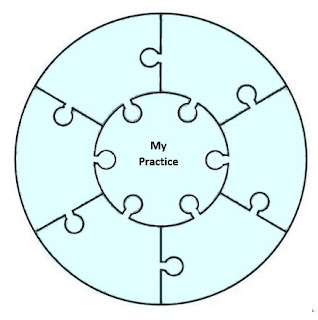This realization then shined a light on the question asked by many internal gongfu practitioners, “Why does it take so long to get it?” To this, the typical response is, “If getting it were that easy, then everyone would be a master.” Well, we need a better answer than that! This series of posts is an attempt to provide a more thoughtful response to this question.
In the Introduction to this series, I explored the meaning of preparation versus readiness from the context of an internal gongfu practice. I also explored two different views of my practice; a compartmentalized view versus an interrelated component view (depicted as a puzzle). In this post, I begin filling in the puzzle pieces by first exploring my daily patterns of activity.
Reviewing for a moment, in my compartmentalized way of looking at my life (as illustrated in the Introduction), I divided my life by activity types: family, career, internal gongfu practice, etc. I had never even remotely considered that the way my body moved or didn’t move during or between these various activities would have any influence or impact on my formal training; my practice.
As I pondered how I might be “training” my body when I was not formally training, I began thinking in terms of daily patterns of movement (activity patterns) that I used across the various compartmentalized types of activities. I started by looking at a typical 24-hour day. To facilitate calculations, I disregarded the eight-hour block of time devoted to sleep and only considered the predominant activity of the remaining sixteen hours of waking experience. Here is how my typical week looks:
| Hours Training | Hours Other | Percentages |
|---|---|---|
| 1 hour per day | 15 hours sitting (Monday through Friday): eating meals, commuting, driving, working at my desk job, visiting friends/family, watching TV, writing projects, etc. | Almost 94% of my day is reinforcing a single physical pattern (sitting) and 6% of my day is training internal gong-fu |
| 1 hour per day | 15 hours various activities (Saturday and Sunday): standing, reaching, squatting, kneeling, sitting, climbing, lifting, carrying, twisting, looking up, down, all around, walking, etc., | Almost 94% of my day is not reinforcing a single physical pattern and 6% of my day is training internal gong-fu |
When I looked at a typical week this way, I realized that the majority of my day (and week!) is spent sitting! I was spending 15 hours a day, five days a week effectively training tight hips, slouched shoulders, etc, and only one hour a day formally training the principles of internal gongfu. My entire day was training the exact opposite of my formal training! And then once a week I’d go to Wujifa class and expect to make progress. In hindsight, this expectation strikes me as delusional!
Granted, the adjustments gained during Wujifa class gave me absolutely valuable guidance. However, attending class and practicing was like taking one step forward and then the rest of my week was like taking two steps backward! At the time, I was totally unaware of this due to the way I had compartmentalized my life.
I have now come to the conclusion that:
- Daily activity patterns that contradict the principles of practice are not congruent with practice and therefore hinder my training.
- Daily activity patterns that do not contradict the principles of practice are congruent with practice and therefore support my training.
In Closing
This component of Activity Patterns is probably the clearest example of the influence of daily life on practice. However, for me to see this I needed to shift my perspective out of a compartmentalized view of my life. After I was able to make this shift, then this pattern was easily identified and I was able to understand how my activity pattern supported or hindered my practice. Noticing this pattern also presents me with an opportunity to change it.
This series will continue with each article filling in one of the puzzle pieces until the entire puzzle is complete. We’ll wrap up by considering how this puzzle can be interpreted in an Internal Gongfu Progress Matrix and finally we’ll look at the role of the Source and Level of Instruction.
Previous post in this series: Mastering Internal Gongfu: Are You Ready? Introduction
Next post in this series: Mastering Internal Gongfu: Are You Ready? Cognitive Bias




